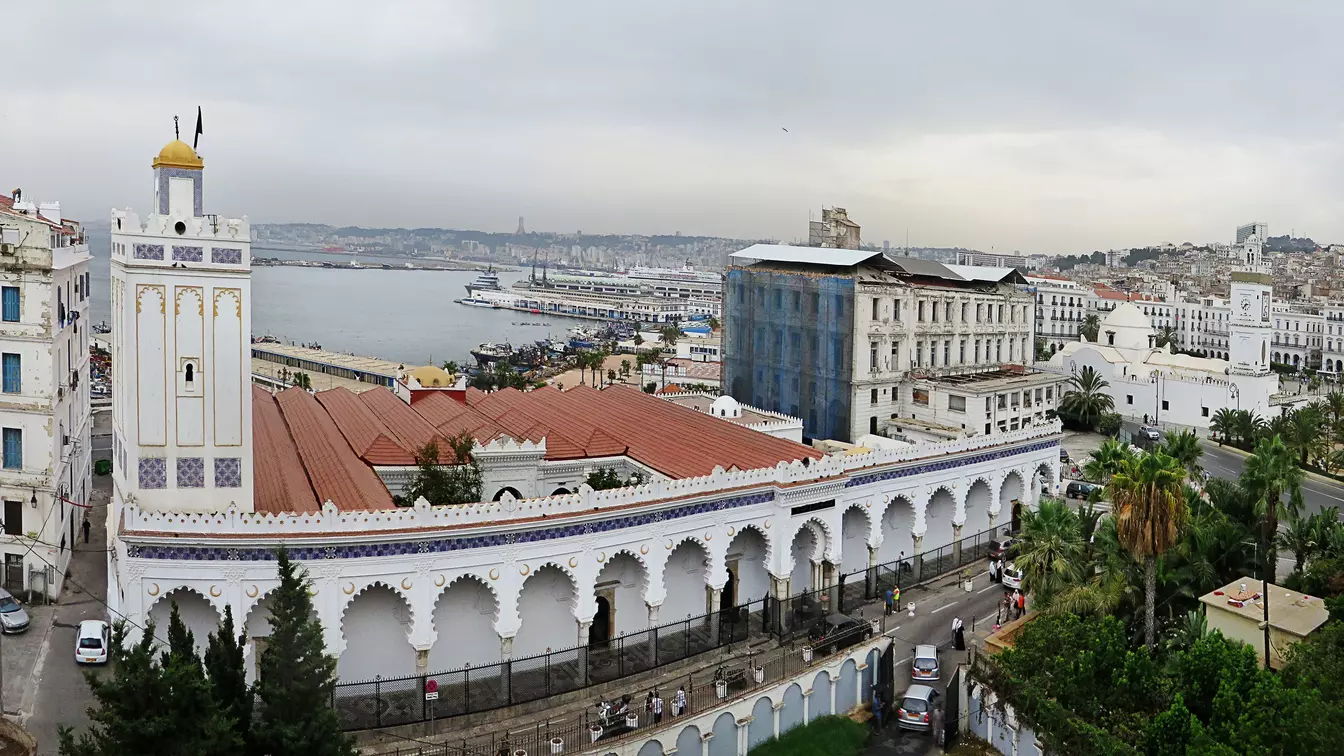
Great Mosque of Algiers (Djamaa el Kebir)
Overall Rating: ⭐⭐⭐⭐☆ (4/5)
Rating Breakdown:
✔ Historical Significance – ⭐⭐⭐⭐⭐ (5/5)
✔ Architectural Beauty – ⭐⭐⭐⭐⭐ (5/5)
✔ Accessibility – ⭐⭐⭐☆☆ (3/5)
✔ Cultural Value: – ⭐⭐⭐☆☆ (3/5)
✔ Maintenance & Preservation – ⭐⭐⭐⭐☆ (4/5)
Weather
- Algiers experiences a Mediterranean climate characterized by hot, dry summers and mild, wet winters.
Tags
- Mosque, Almoravid Architecture, Historical Landmark, Religious Site
Timings
- The mosque is generally open to visitors outside of prayer times. Non-Muslim visitors should check in advance for visiting hours and any restrictions.
Time Required
- A visit typically requires 1 to 2 hours to explore the mosque and its surroundings.
Entry Fee
- There is no admission fee; however, donations for the upkeep of the site are appreciated.
Things to See & Do
- Architectural Features: Observe the Almoravid-style architecture, including the prayer hall with naves perpendicular to the qibla wall and the rectangular courtyard bordered by galleries.
- Minaret: Although constructed later, the minaret adds to the mosque's historical layers and offers insight into the architectural evolution.
- Historical Inscriptions: Look for inscriptions and elements that date back to the mosque's founding in 1097.
Best Time to Visit
- Spring (March to May) and autumn (September to November) offer pleasant weather, making these seasons ideal for a visit.
Nearest Parking Spots
- Limited street parking is available nearby. Utilizing public transportation or taxis is recommended due to potential congestion in the Casbah area.
Overview
- Djamaa el Kebir, also known as the Great Mosque of Algiers, is a historic mosque located within the Casbah of Algiers, near the city's harbor.
- Dating back to 1097, it is one of the few remaining examples of Almoravid architecture and is considered the oldest mosque in Algiers. The mosque features a prayer hall with naves perpendicular to the qibla wall and a rectangular courtyard bordered by galleries.
- Over the centuries, it has undergone various additions and reconstructions, reflecting the city's rich history.
- Prayer Hall: Features a layout with naves perpendicular to the qibla wall, characteristic of Almoravid architecture.
- Minaret: Added in later periods, the minaret stands as a testament to the mosque's evolving architectural styles.
- Courtyard: A rectangular courtyard bordered by galleries on its narrower sides, providing a serene space for reflection.
- Founded in 1097 during the Almoravid dynasty, Djamaa el Kebir is among the oldest mosques in Algeria. An inscription on the minbar (pulpit) attests to its construction date. Over the centuries, the mosque has seen various additions and renovations, including the construction of its minaret in 1322 and a portico in 1837, reflecting the diverse historical influences that have shaped Algiers.
- The mosque exemplifies Almoravid architecture with its prayer hall consisting of naves perpendicular to the qibla wall and a rectangular courtyard bordered by galleries.
- The minaret, added in 1322, and the portico, constructed in 1837, showcase the architectural evolution influenced by subsequent dynasties.
- Respectful Attire: Dress modestly in accordance with Islamic customs when visiting religious sites.
- Photography: Seek permission before taking photographs, especially inside the mosque.
- Guided Tours: Consider engaging a local guide to gain deeper insights into the site's historical and architectural significance.
- By Taxi: Taxis are a convenient mode of transportation within Algiers and can take you directly to the mosque.
- By Public Transport: Buses and shared minibuses operate throughout the city; inquire locally for routes that pass near the Casbah district.
- On Foot: If staying nearby, the mosque is accessible by walking, allowing for an immersive experience of the historic Casbah area.